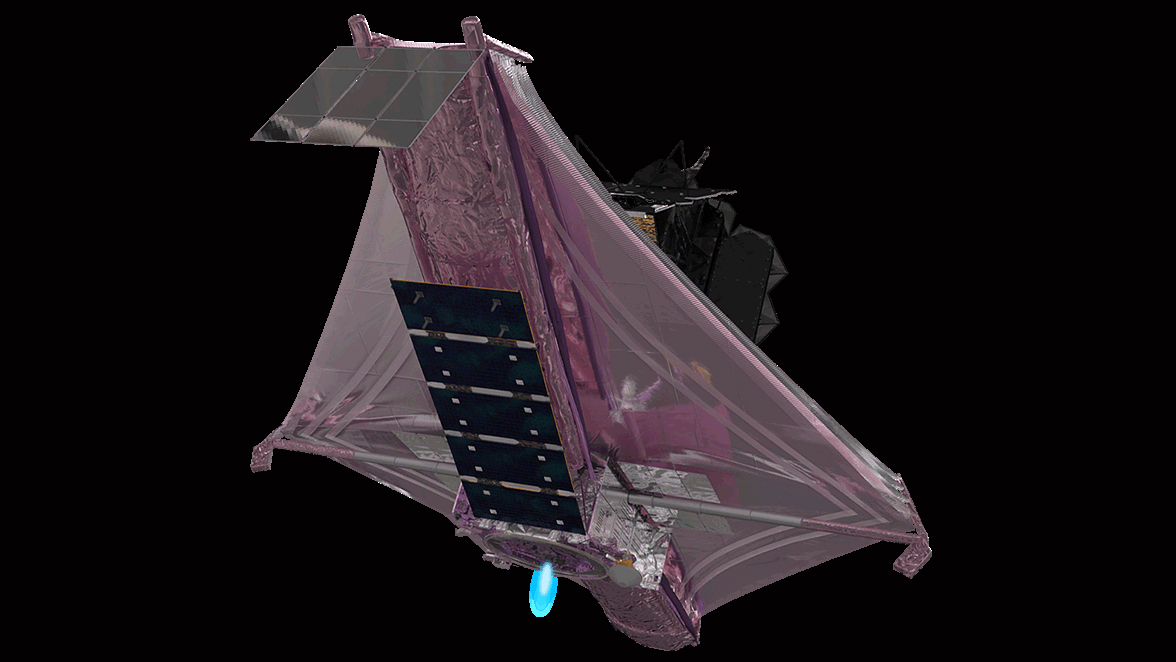James Webb Space Telescope will glide to its deep-space parking spot today
Nearly a month after launch, the James Webb Space Telescope will arrive at its deep-space celestial destination today.
Today's the day: Nearly a month after launch, the James Webb Space Telescope will arrive at its deep-space celestial destination on Monday (Jan. 24).
Webb will be orbiting Earth-sun Lagrange Point 2 (L2), which is about 930,000 miles (1.5 million kilometers) away from our planet. Here, the spacecraft can use a minimum of fuel to orbit thanks to its alignment with the sun and Earth.
NASA will not be broadcasting from mission control during the burn, as the agency did for some previous key milestones. However, NASA plans to carry several follow-up events live today after executing the crucial burn at about 2 p.m. EST (1900 GMT).
Related: James Webb Space Telescope vs. Hubble: How will their images compare?

First the agency will host a broadcast at 3 p.m. EST (2000 GMT) live on the NASA Science Live website, as well as YouTube, Facebook, and Twitter, featuring scientists and engineers working on Webb.
Viewers can submit questions on social media using the hashtag #UnfoldtheUniverse or by leaving a comment on the Facebook or YouTube stream. Two representatives will answer questions: Amber Straughn, deputy project scientist for Webb communications at NASA’s Goddard Space Flight Center in Maryland, and Scarlin Hernandez, flight systems engineer, Space Telescope Science Institute in Baltimore.
Following the public livestream will be a media teleconference at 4 p.m. EST (2100 GMT) that will also be broadcast live on the agency’s website. Here's who will be on the call:
Sign up for the Live Science daily newsletter now
Get the world’s most fascinating discoveries delivered straight to your inbox.
- Lee Feinberg, Webb optical telescope element manager, Goddard
- Amy Lo, Webb vehicle engineering lead, Northrop Grumman
- Keith Parrish, Webb observatory commissioning manager, Goddard
- Jane Rigby, Webb operations project scientist, Goddard
Webb has an ambitious mission to better understand the early days of our universe, to peer at distant exoplanets and their atmosphere, and to answer large-scale questions such as how quickly the universe is expanding.
The $10 billion telescope launched Dec. 25 following years of developmental delays, but since launch has executed its milestones on time and with little trouble to date. The complex deployment of its main mirror, for example, concluded with only minor hitches earlier this month.
Follow Elizabeth Howell on Twitter @howellspace. Follow us on Twitter @Spacedotcom and on Facebook.

Elizabeth Howell was staff reporter at Space.com between 2022 and 2024 and a regular contributor to Live Science and Space.com between 2012 and 2022. Elizabeth's reporting includes multiple exclusives with the White House, speaking several times with the International Space Station, witnessing five human spaceflight launches on two continents, flying parabolic, working inside a spacesuit, and participating in a simulated Mars mission. Her latest book, "Why Am I Taller?" (ECW Press, 2022) is co-written with astronaut Dave Williams.










